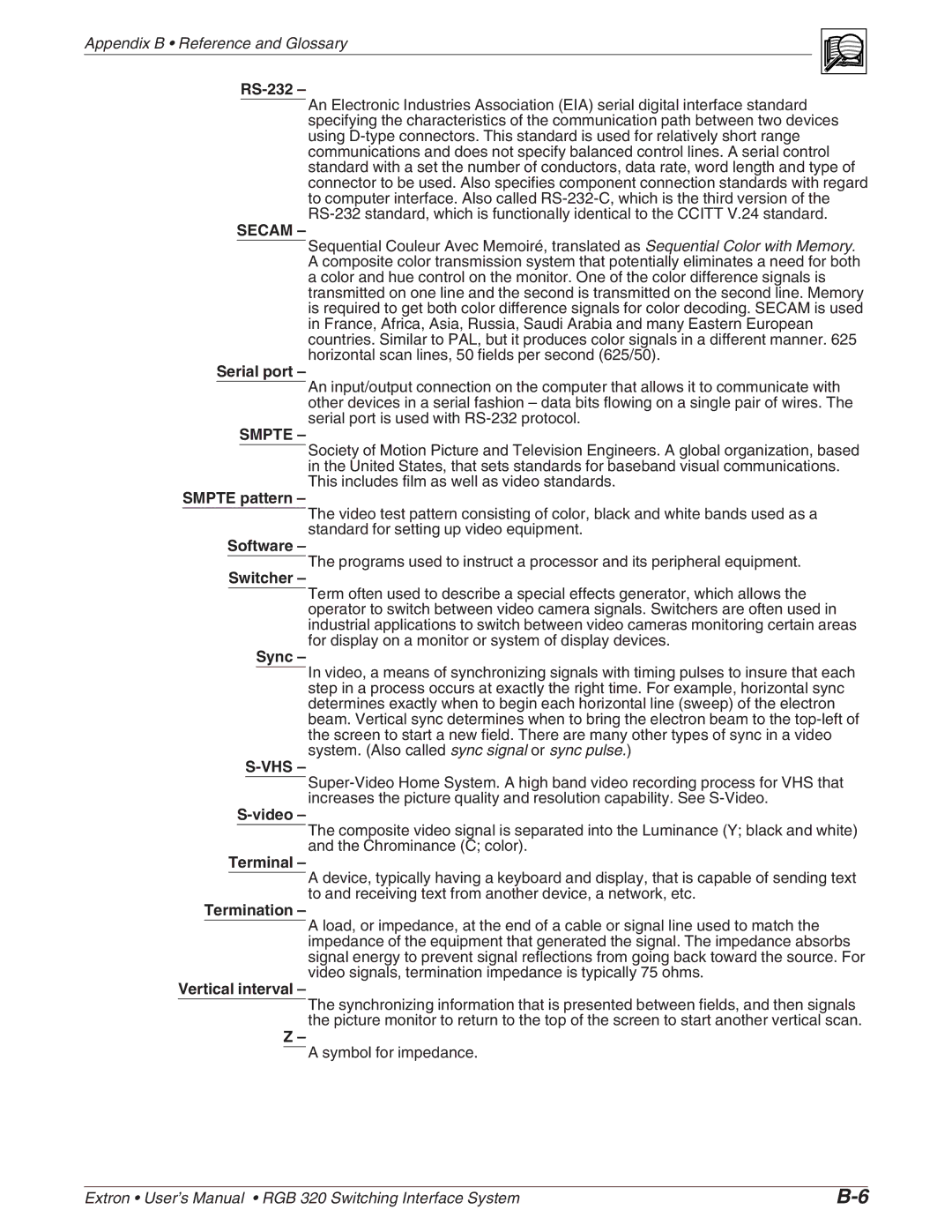
Appendix B • Reference and Glossary
An Electronic Industries Association (EIA) serial digital interface standard specifying the characteristics of the communication path between two devices using
SECAM –
Sequential Couleur Avec Memoiré, translated as Sequential Color with Memory. A composite color transmission system that potentially eliminates a need for both a color and hue control on the monitor. One of the color difference signals is transmitted on one line and the second is transmitted on the second line. Memory is required to get both color difference signals for color decoding. SECAM is used in France, Africa, Asia, Russia, Saudi Arabia and many Eastern European countries. Similar to PAL, but it produces color signals in a different manner. 625 horizontal scan lines, 50 fields per second (625/50).
Serial port –
An input/output connection on the computer that allows it to communicate with other devices in a serial fashion – data bits flowing on a single pair of wires. The serial port is used with
SMPTE –
Society of Motion Picture and Television Engineers. A global organization, based in the United States, that sets standards for baseband visual communications. This includes film as well as video standards.
SMPTE pattern –
The video test pattern consisting of color, black and white bands used as a standard for setting up video equipment.
Software –
The programs used to instruct a processor and its peripheral equipment.
Switcher –
Term often used to describe a special effects generator, which allows the operator to switch between video camera signals. Switchers are often used in industrial applications to switch between video cameras monitoring certain areas for display on a monitor or system of display devices.
Sync –
In video, a means of synchronizing signals with timing pulses to insure that each step in a process occurs at exactly the right time. For example, horizontal sync determines exactly when to begin each horizontal line (sweep) of the electron beam. Vertical sync determines when to bring the electron beam to the
S-VHS –
S-video –
The composite video signal is separated into the Luminance (Y; black and white) and the Chrominance (C; color).
Terminal –
A device, typically having a keyboard and display, that is capable of sending text to and receiving text from another device, a network, etc.
Termination –
A load, or impedance, at the end of a cable or signal line used to match the impedance of the equipment that generated the signal. The impedance absorbs signal energy to prevent signal reflections from going back toward the source. For video signals, termination impedance is typically 75 ohms.
Vertical interval –
The synchronizing information that is presented between fields, and then signals the picture monitor to return to the top of the screen to start another vertical scan.
Z–
A symbol for impedance.
Extron • User’s Manual • RGB 320 Switching Interface System |
